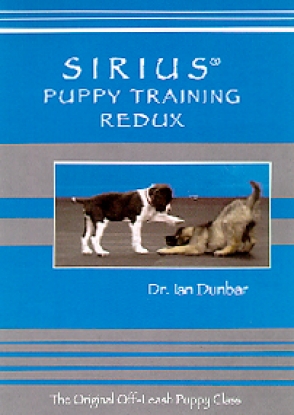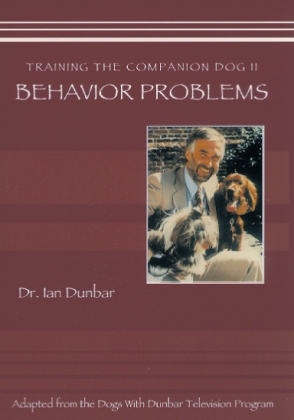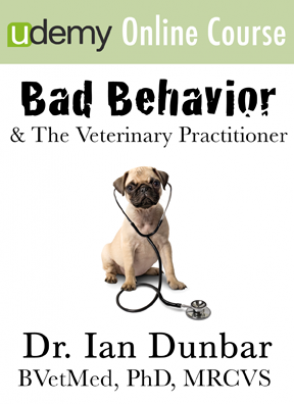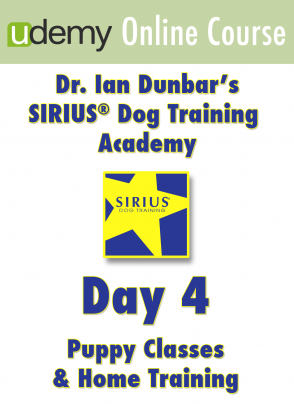Learn how to run a puppy class the SIRIUS way, using the off-leash, lure/reward, dog-friendly training methods that have made the SIRIUS philosophy the hallmark of pet dog training.
TWEAKING LEARNING THEORY FOR HUMAN BRAINS
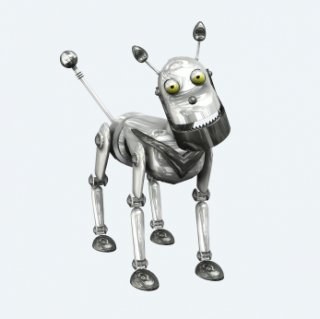
These days, many trainers eat and breathe learning-theory. The Little Book Of Learning Theory (LBOLT) is creedally accepted by one and all, even though little of it works in practice. Please don’t stone me. I am not being heretical. Learning theory is a real and valid description of how computers train animals but the LBOLT offers little for when people teach people or train animals. People are not computers and have neither the consistency, computing power or timing. LBOLT has many constraints in practice. To make matters worse, the really useful principles that LBOLT has to offer are ignored by many trainers, for example, that consequences are binary — from the dog’s point of view either things get better, or worse. Instead, trainers will debate for hours, which quadrant they are in, even though it’s all really a moot debate. A trainer might consider a procedure to be negative punishment (time out from play) but the dog perceives it as positive punishment (solitary confinement in prison watching other dogs play).
During my years at UC Berkeley, I was the only PhD candidate who had never taken a Psychology course. I was surprised that so many students accepted learning theory as gospel and assumed that the principles would work when applied in human education, motivation, or animal training. Because of my lack of a formal psychological education, I accepted nothing and questioned everything, especially everything to do with punishment. My recurring thought was, “that might work in a laboratory when a computer is administering shock and the rat has no choice, but that’s’ never going to work in real live when people are trying to train animals.” Try that on a dog and either the dog will just terminate training by running away, or convince the “trainer” to run away. (Of course, if the dog does the latter, he will probably be killed.)
From growing up on a farm and always being surrounded by animals, I realized that most punishment doesn’t work in practice. Because, unlike computers, people are outrageously inconsistent. The animal (or child, or employee) first learns those times and situations when misbehavior is possible without punishment, i.e., when the cat’s away the mice will play. When designing the Animal Behavior Department for the San Francisco SPCA, I realized that we were asking the wrong questions. Rather than asking, “How can I punish my dog for misbehaving when off-leash, or when left at home alone?” we should be asking, “How can I reward my dog for behaving appropriately when off-leash, or when left at home alone? Whoooo Hooo! Light-bulb moments. Integrate short training interludes into off-leash walks and play — sit/go play, sit/go play, sit/go play etc., and the distraction becomes a reward. “Go Play” may now be used as a reward to reinforce sitting when requested. Similarly, stuff chewtoys with food and each piece of food rewards the dog for chewing his chewtoy and for lying down quietly and calmly. Brilliant. We just eliminated owner-absent destructive chewing, excessive barking and hyperactivity simply by feeding dogs from chewtoys instead of bowls.
So laboratory punishment schedules don’t work that well in dog training without adhering to a number of strict criteria. However, after I started teaching Puppy Classes in the early 80s, I quickly realized that most schedules of reinforcement don’t work that well in dog training either. Differential reinforcement is the only schedule that makes any practical sense in terms of maintaining and increasing frequency and continually improving the quality of behavior.
Over one hundred years ago, the study of animal learning was whelped from dog training. Before Edward Lee Thorndike started his landmark learning studies, he asked local dog trainers how they trained dogs. For 90 years dog trainers pretty much ignored learning theory. Joel Walton repeatedly suggested that I titled my 1980s learning theory seminars, “Learning Secrets” because at that time, learning theory a secret for most trainers. When dog trainers embraced learning theory, pet dog training took a quantum leap and became science-based dog training.
However, nowadays the LBOLT is literally worshipped and dog training is in danger of changing from a single science to differing religions with sectarian fundamentalist trainers only worshipping and interpreting their half of the LBOLT. There seems to be more discussion and expression of emotional views and feelings about what is right and what is wrong, than there is about quantifying quicker, easier and more effective ways to change the frequency and quality of behavior and hence, the dogs’ and owners’ quality of life.
I think it is time to come full-circle and for pet dog trainers to rewrite the LBOLT as a simple and practical text.
The first gift that we can give to all animal owners, parents and teachers is to simplify the ridiculously ambiguous and unnecessarily complicated and confusing terminology. Second, let’s simplify the underlying theory by going back to Thorndike’s original premise — that behavior is influenced by consequences and that consequential feedback is binary. Thorndike’s Law of Effect stated, that the frequency of a behavior is dependent on its immediate outcome: if the outcome is pleasant, the behavior will increase in frequency; if the outcome is unpleasant, the behavior will decrease in frequency. Third, rather than unsuccessfully trying to mimic consistent computer quantum feedback with kibble and shocks, let’s train dogs off-leash and use our voices as feedback — praise and instructive reprimands. We cannot mimic computers but we can make sophisticated, inimitably human, qualitative judgments and we can give more varied and instructive feedback. When we use verbal instruction and verbal correction, what we do simply cannot be defined by existing computer-generated learning theory. The LBOLT remains a black and white cave painting compared to our Avatar.
To hear more of Dr. Dunbar's views and insights see him live at one of his upcoming seminars.

